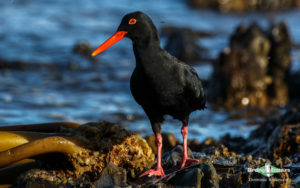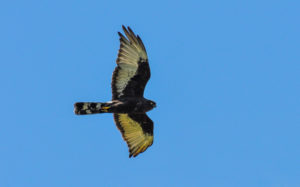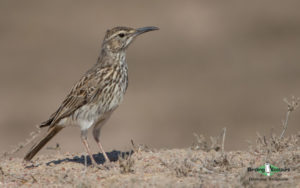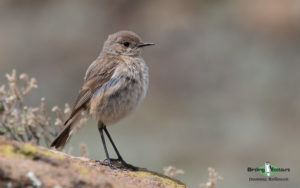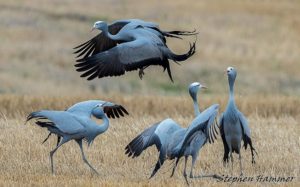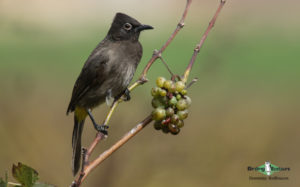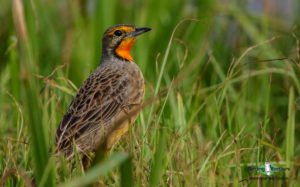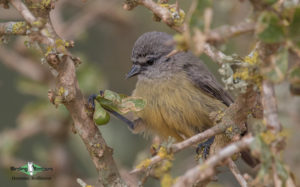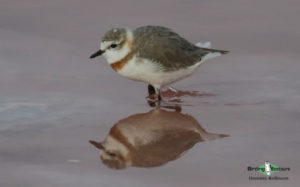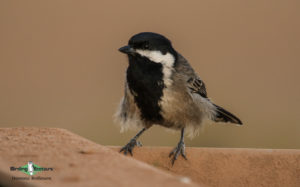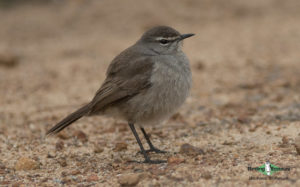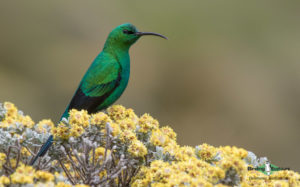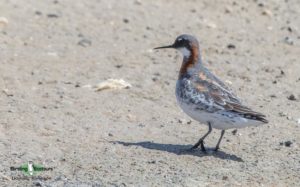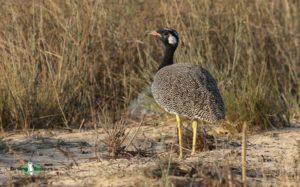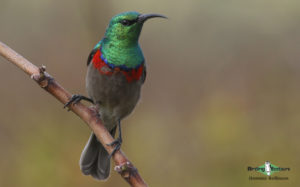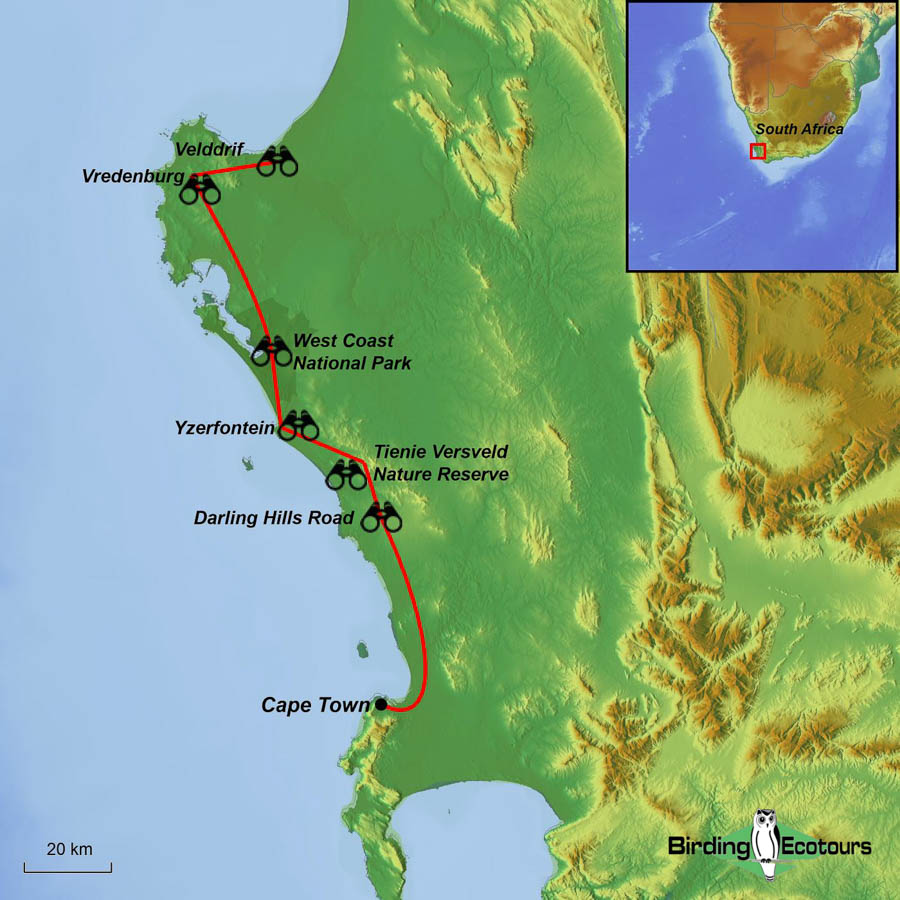1-day West Coast Birding Tour
Go to: South Africa Day Tours | Full length South Africa birding tours | Birding Tours in Africa | All our birding tours
1-day West Coast Birding Tour
As usual this is a very full day of birding. We will drive north from the beautiful city of Cape Town. Our first stop is generally the Darling area, where we are able to find a number of important species. The patches of fynbos harbor Cape Clapper Lark (in spring), Southern Black Korhaan, Grey-backed Cisticola, Cape Grassbird, Grey-winged Francolin, Bokmakierie, and Chestnut-vented Warbler, and others. The farmlands will be birded for Blue Crane, African Hoopoe, Pied Starling, Capped Wheatear, Red-capped Lark, and Pearl-breasted Swallow, while we may also get lucky with Secretarybird striding through the veld. We normally stop at a small wetland where Red-chested Flufftail breeds; however, it is very difficult to see. Other birds seen here include African Rail (difficult), African Snipe, Little Rush Warbler, and Yellow Bishop.
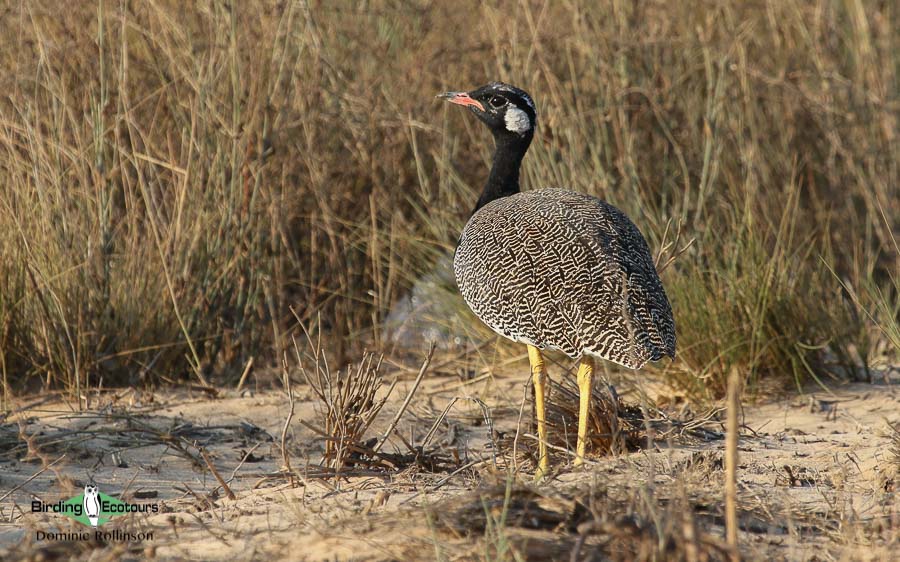
Our next stop will be at the tiny Tienie Versveld Wildflower Reserve, an excellent stakeout for the unique Western Cape subspecies of Cloud Cisticola. Here it is also usually easy to find the stunning Cape Longclaw, Capped Wheatear, Large-billed Lark, several waterbirds often including South African Shelduck, and good numbers of other fine birds. This tiny reserve also hosts a plethora of stunning flowers, which are best viewed in spring.
We can then head to the extremely interesting fishing town of Yzerfontein to search the rocky shoreline for Bank, Cape, and Crowned Cormorants, African Oystercatcher, and others. Yzerfontein is an excellent site on the West Coast
We will continue northward to the West Coast National Park, which has fantastic terrestrial endemic birding as well as a huge lagoon, which is one of Africa’s primary shorebird stopover sites. Sought-after species we can find here include Black Harrier (and also African Marsh Harrier), Grey-winged Francolin, Cape Penduline Tit, Grey Tit, Cape Bulbul, White-backed Mousebird, Southern Black Korhaan, and many others. Common Ostrich is common. Shorebirds (waders) include impressive numbers of Curlew Sandpiper, Whimbrel, Eurasian Curlew, Red Knot, Bar-tailed Godwit, Common Greenshank, Marsh Sandpiper, Grey (Black-bellied) Plover, Chestnut-banded Plover, Greater and Lesser Flamingos, and a host of others. Several shorebird species such as Common Redshank that are genuine vagrants to South Africa are actually regular here at the Langebaan Lagoon in the West Coast National Park. We can also visit a freshwater wetland within the national park for a suite of new species, including African Rail (with luck), Black Crake, African Swamphen, several waterfowl, Brown-throated Martin, Sand Martin (late summer), reed-associated warblers, and many more. Antelope in the park include Common Eland, Steenbok, and Bontebok, while we may even get lucky with a Caracal sighting!
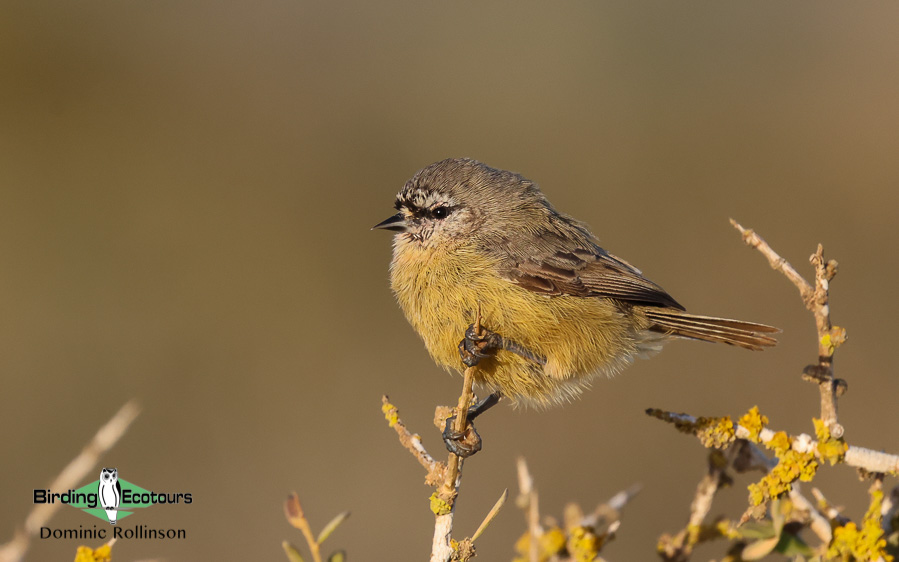
Time permitting we can look for Sickle-winged Chat, Cape Long-billed Lark, Secretarybird (with luck), Acacia Pied Barbet, Grey-backed Sparrow-Lark, Namaqua Sandgrouse (tough), Ant-eating Chat, Antarctic Tern (winter) and other birds to the north of the West Coast National Park at the Cape Columbine Nature Reserve near Paternoster. We may also have time to visit the salt works around Velddrif, where Chestnut-banded Plovers are particularly numerous, with a few Red-necked Phalaropes present too, before heading back to Cape Town.
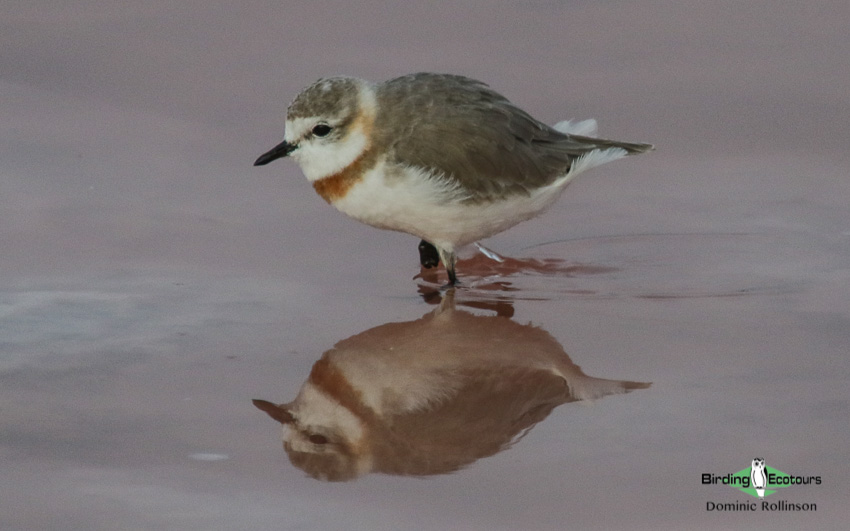
The above are all options during the day. However, due to time constraints all of them might not be possible in a single day, and we would have to decide what to focus on.
The guide for day trips is allocated only after you have booked, as all of them are run as private trips. But we always use the country’s top birding guides.
Download Itinerary
1-Day West Coast Trip Report
By Dominic Rollinson
This is an example of a typical 1-day West Coast birding trip report. Please email us ([email protected]) for more trip reports from this destination.
DOWNLOAD TRIP REPORT
Marc was on holiday for a few days around Cape Town and had a number of Cape targets which he was keen to track down. So, after reviewing Marc’s list of target birds, we decided a west coast day trip would work out best. Unfortunately, we happened to choose one of April’s windiest days, however we still had a fun, bird-filled day out and managed to find most of Marc’s target birds.
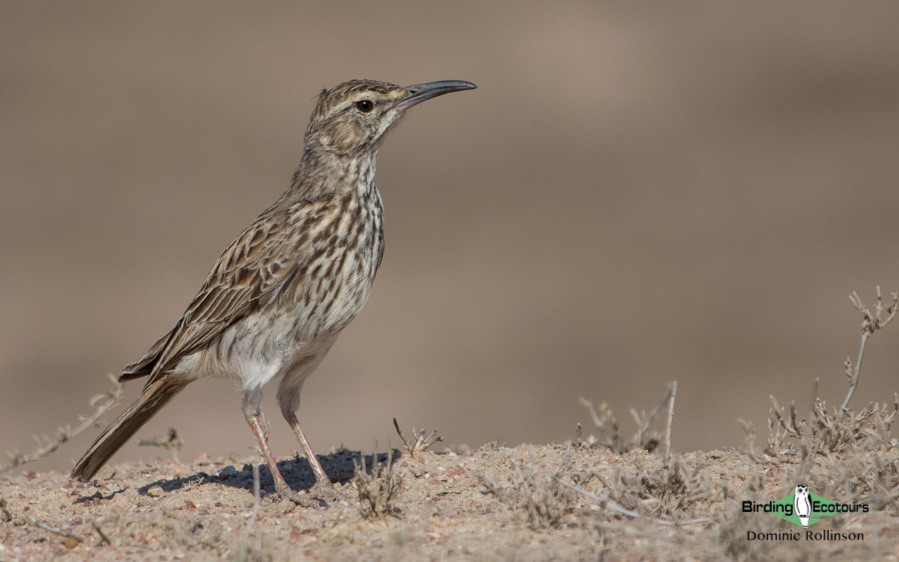
Detailed Report
Marc and I left Cape Town before dawn to ensure we could arrive in some good strandveld (beach scrub) habitat at around sunrise. As we left Cape Town, we could still see the red glow of Table Mountain as the mountain was experiencing one of its worst wildfires in a long time, with firefighters battling to contend with the gale force winds!
We arrived at our Cape Clapper Lark spot, however the combination of strong winds and the lateness of the season meant they were quiet and would not show for us. In late winter/spring these birds are normally very easy to find as they give their obvious wing-clapping display. While birding in the area we came across our first Cape Sparrow, Bokmakierie, and Karoo Scrub Robin of the day.
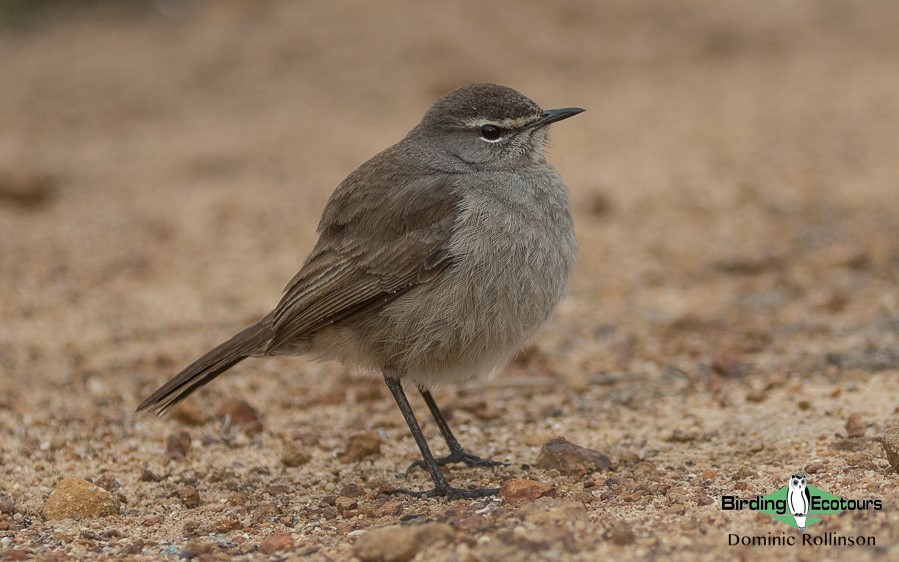
We headed further up the coast and stopped in at the Darling Hills area where we had good numbers of Pied Starling, with a few Wattled Starling in amongst these flocks. We also came across Cape Weaver, Red-capped Lark, Karoo Prinia, Cape White-eye, Cape Bulbul, and our best bird of the morning so far, a brief view of a male Southern Black Korhaan. Before we carried on with our way to West Coast National Park, we stopped in briefly at Tienie Versveld Wildflower Reserve where it did not take long to find the Cape subspecies of Cloud Cisticola as well as a few Blue Cranes.
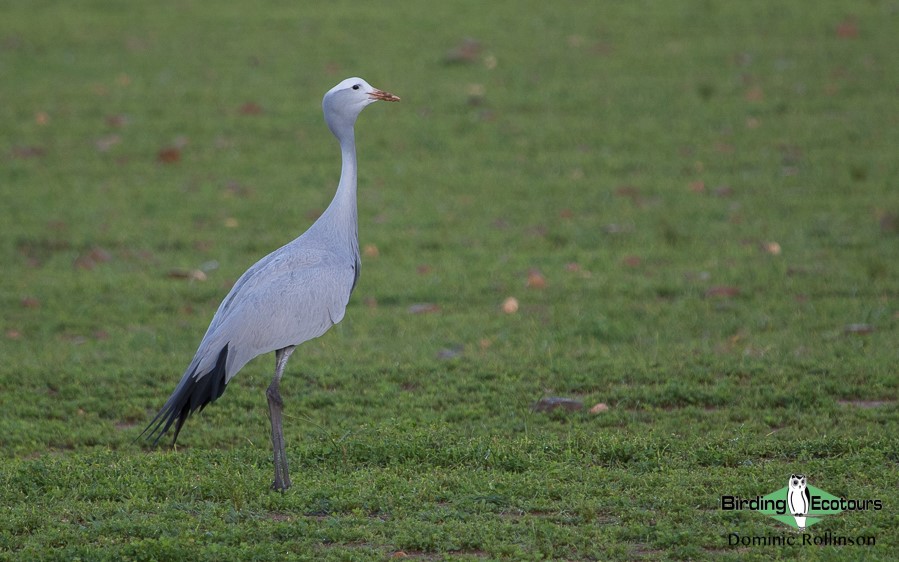
Our next stop was West Coast National Park, once in the park we headed to a nearby waterhole (with a hide/blind overlooking it) and enjoyed a late breakfast while we watched waterbirds going about their business and a number of terrestrial species coming down to drink. Waterbirds here included South African Shelduck, Cape Shoveler, Cape Teal, Yellow-billed Duck, Lesser Swamp Warbler, and a very showy African Rail. The nearby scrub yielded good views of Karoo Lark, Cape Spurfowl, Karoo Scrub Robin, Chestnut-vented Warbler, Grey-backed Cisticola, and Yellow Canary. In the distance we could see a number of Common Ostriches, a common species throughout the park.
We had timed our day so that we could arrive at Geelbek Hide with a dropping tide which ensured we could experience the huge numbers of waders (shorebirds) which makes this park famous amongst birders. At this time of the year many of the species are in almost complete breeding plumage (before they depart for the Northern Hemisphere to breed) which is quite different to how we mostly experience migrant waders in South Africa. While scanning through the large numbers of waders, hoping for a rarity (unfortunately not this time), we managed to find Black-winged Stilt, Pied Avocet, Eurasian Whimbrel, Eurasian Curlew, Common Greenshank, Grey, Common Ringed, and Chestnut-banded Plovers, Ruddy Turnstone, Curlew, Terek, and Marsh Sandpipers, Sanderling, and Little Stint. The hordes of Greater and Lesser Flamingos however did not take as much effort to pick out as they went about feeding in the shallows. In the nearby strandveld we found the beautiful Black Harrier as well as Martial Eagle (rare in the park), Jackal Buzzard, Grey-winged Francolin, and Malachite Sunbird.
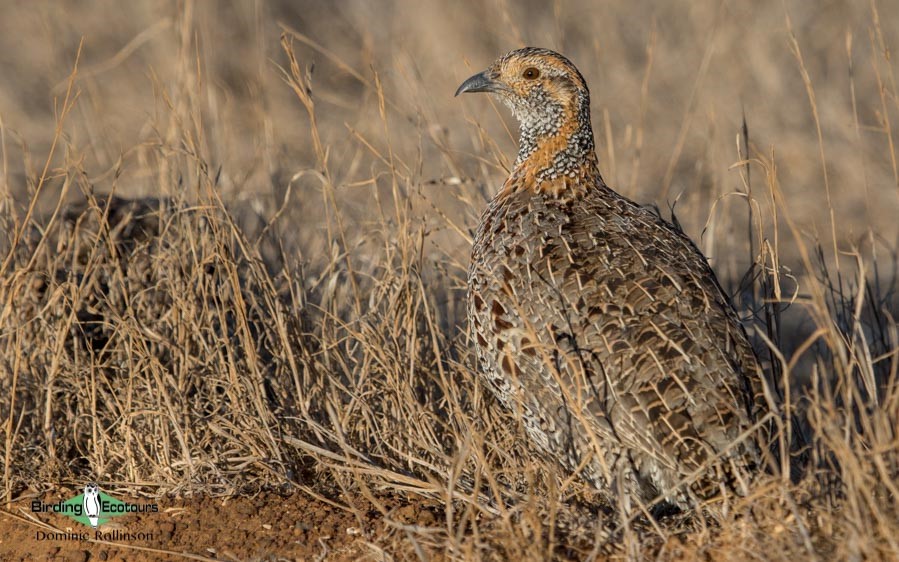
Before we left the park, we made a quick stop at Seeberg Hide where we added the likes of Kittlitz’s, Three-banded, and White-fronted Plovers, African Oystercatcher, and White-backed Mousebird to our rapidly growing list.
Once out the park we made our way through the town of Langebaan and into the farmlands around Vredenburg on the Columbine Peninsula. The wheatfields in this area often hold a number of special birds, and today was no different. Highlights from our time here included Cape Long-billed and Large-billed Larks, Cape Bunting, White-throated Canary, Sickle-winged Chat, Capped Wheatear, Namaqua Dove, Blue Crane, and after much searching a couple of obliging Grey Tits. Before turning back south towards Cape Town we took a scan over the bay from near St Helena Bay and found Bank, Crowned, Cape, and White-breasted Cormorants.
We ended a long but really enjoyable day out with 108 species on the list and managed to find many of Marc’s target birds.
DOWNLOAD TRIP REPORT
